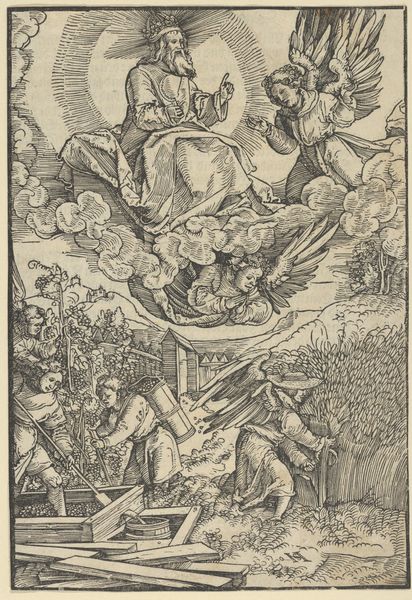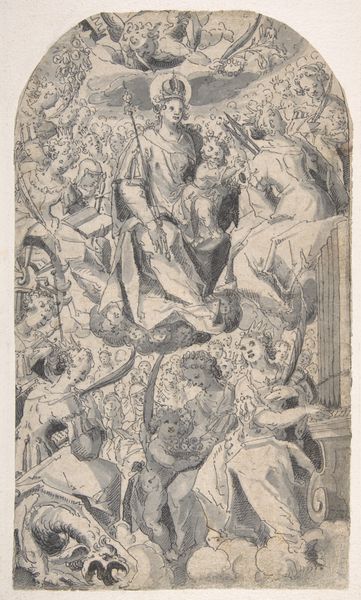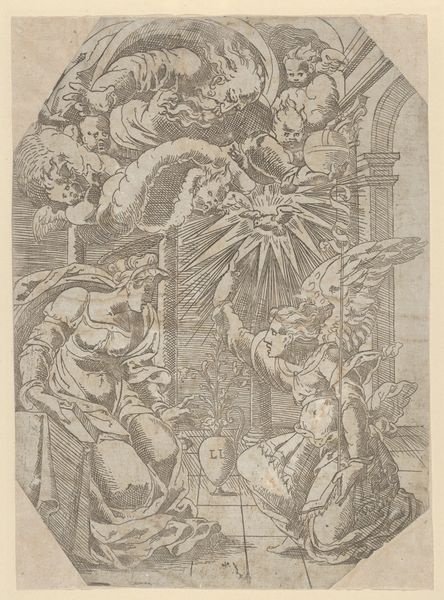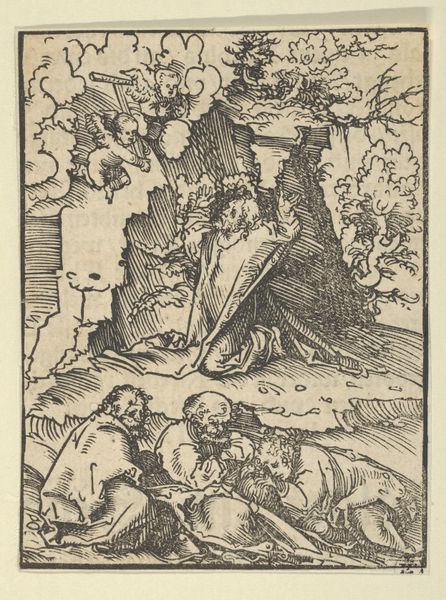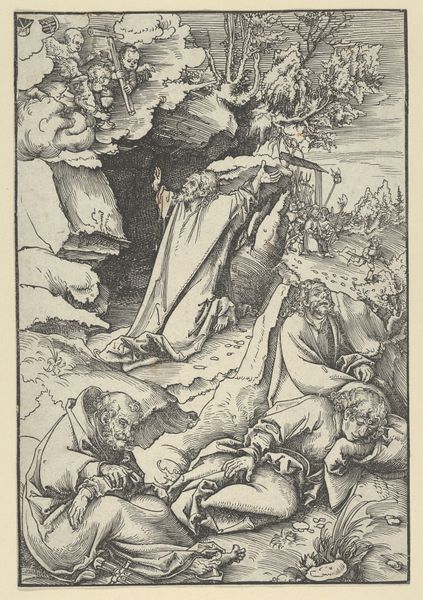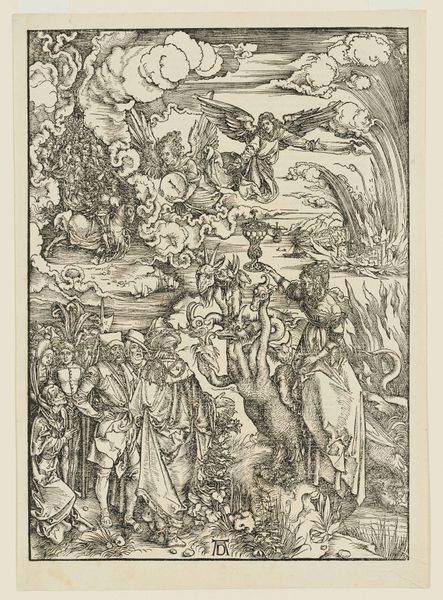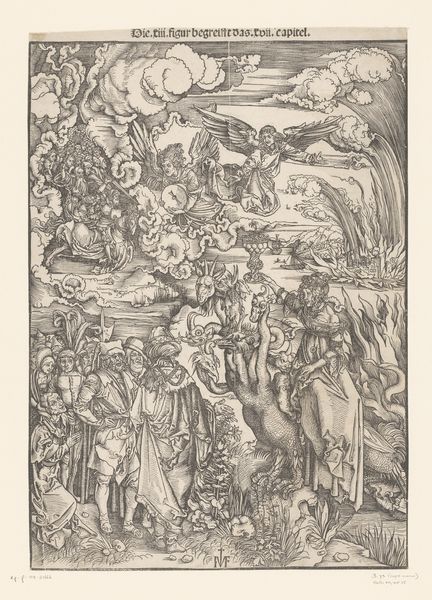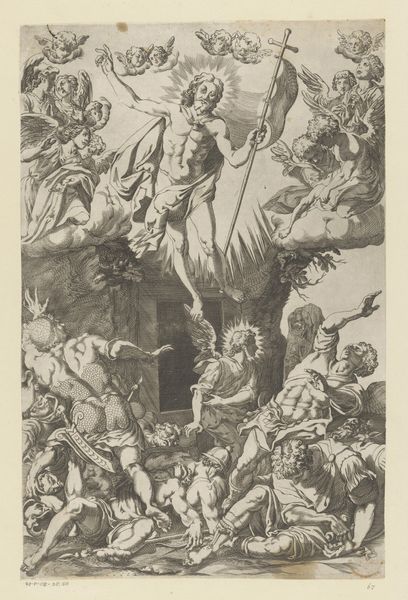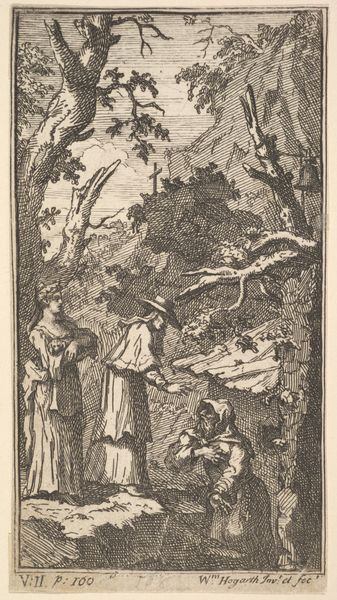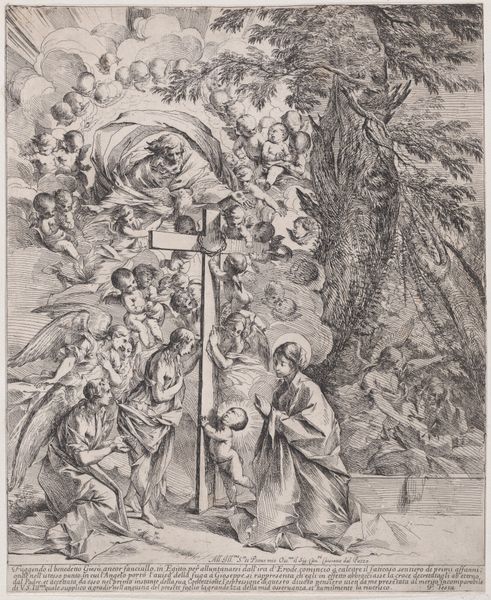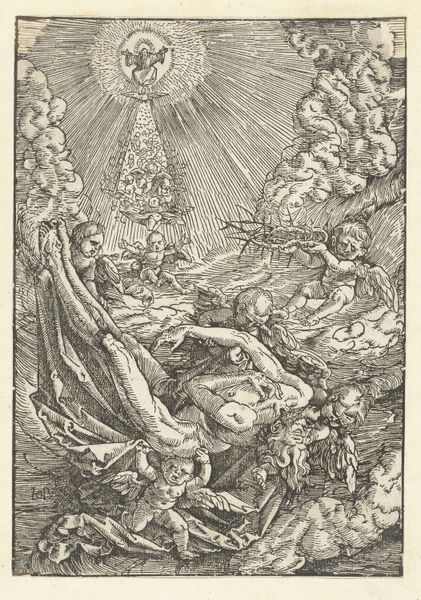
print, woodcut
# print
#
landscape
#
figuration
#
woodcut
#
history-painting
Dimensions: 6 3/4 x 5 5/8 in. (17.15 x 14.29 cm) (image)
Copyright: Public Domain
This anonymous print, “Christ in the Wilderness,” presents us with a challenging question: how do we interpret a traditional Christian subject through a non-Western cultural lens? Made by an unknown artist, it’s a fascinating example of cross-cultural exchange. The image is packed with visual information. The landscape is not the Judean desert, but instead a kind of classical Chinese garden, complete with pagodas, stylized clouds, and auspicious creatures. The traditional narrative of Christ's temptation is reimagined within a completely different cultural and religious frame. What happens when you try to reconcile that setting with Christian theology? As historians, our task is to uncover the social conditions that allow for such a hybrid image to be produced. Further research may reveal to us the religious, political, and economic conditions that shaped this unique artwork. The meaning of art is contingent on social and institutional context.
Comments
minneapolisinstituteofart almost 2 years ago
⋮
Giulio Aleni's book of Gospel stories was limited to fifty-six illustrations, about one-third the number in Jerome Nadal's Images from the Gospels, Aleni's inspiration and iconographic source. In this scene representing the three temptations of Christ, the Chinese artists cleverly conflated three Nadal prints into one. The silhouetted, abstracted stork and groups of devils interspersed in the composition, which look as though they might be Chinese elements, actually follow Nadal's original. The Chinese aesthetic is instead evident in the stippled, planar treatment of the rocky landscape, the hair and beard styles of Christ and the angels, and the architecture of the Temple of Jerusalem. The artist, or perhaps Aleni, also introduced a significant change by omitting the figure of God the Father in the clouds, picturing instead a simple dove, symbolizing the Holy Spirit.
Join the conversation
Join millions of artists and users on Artera today and experience the ultimate creative platform.
